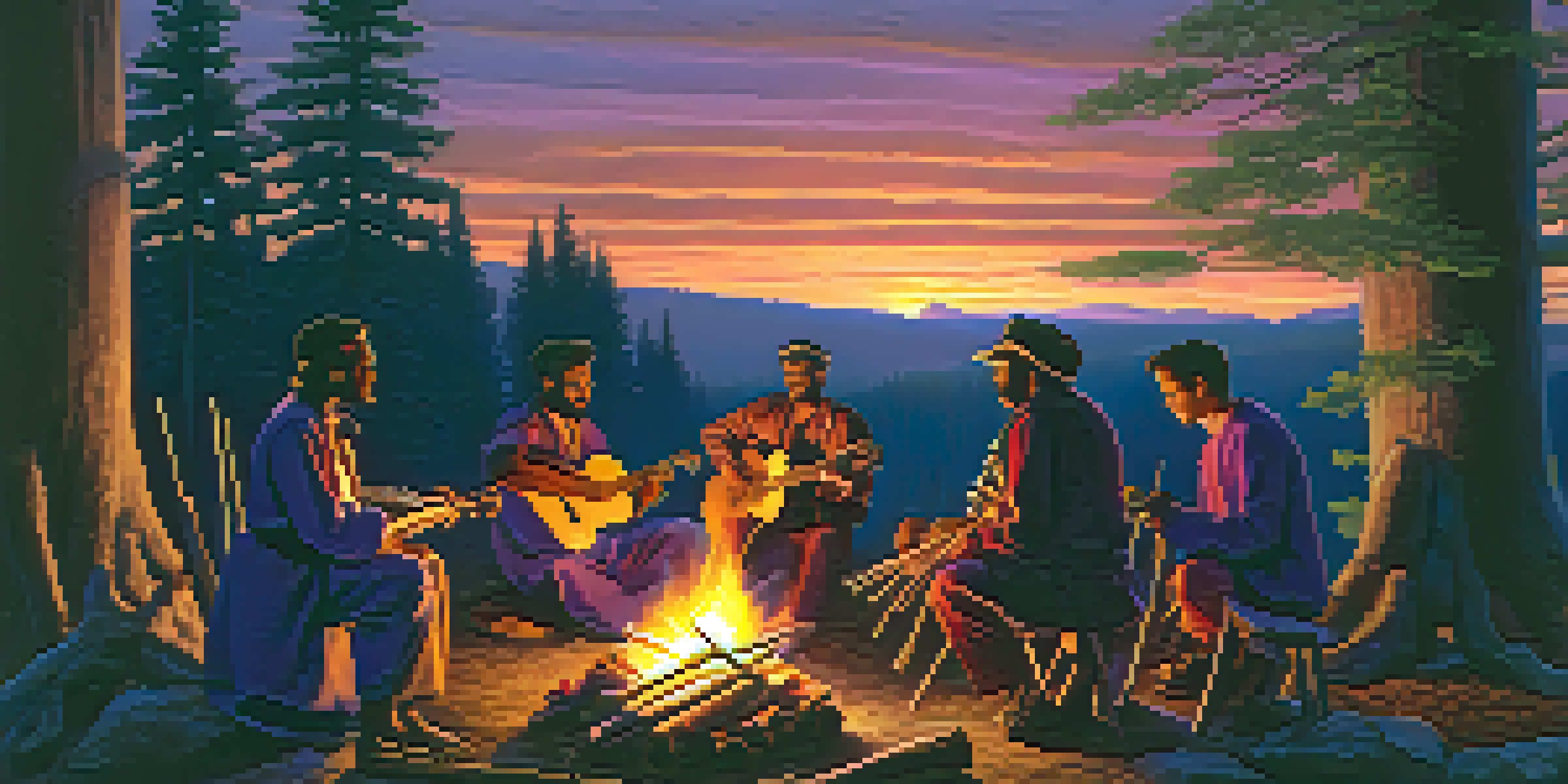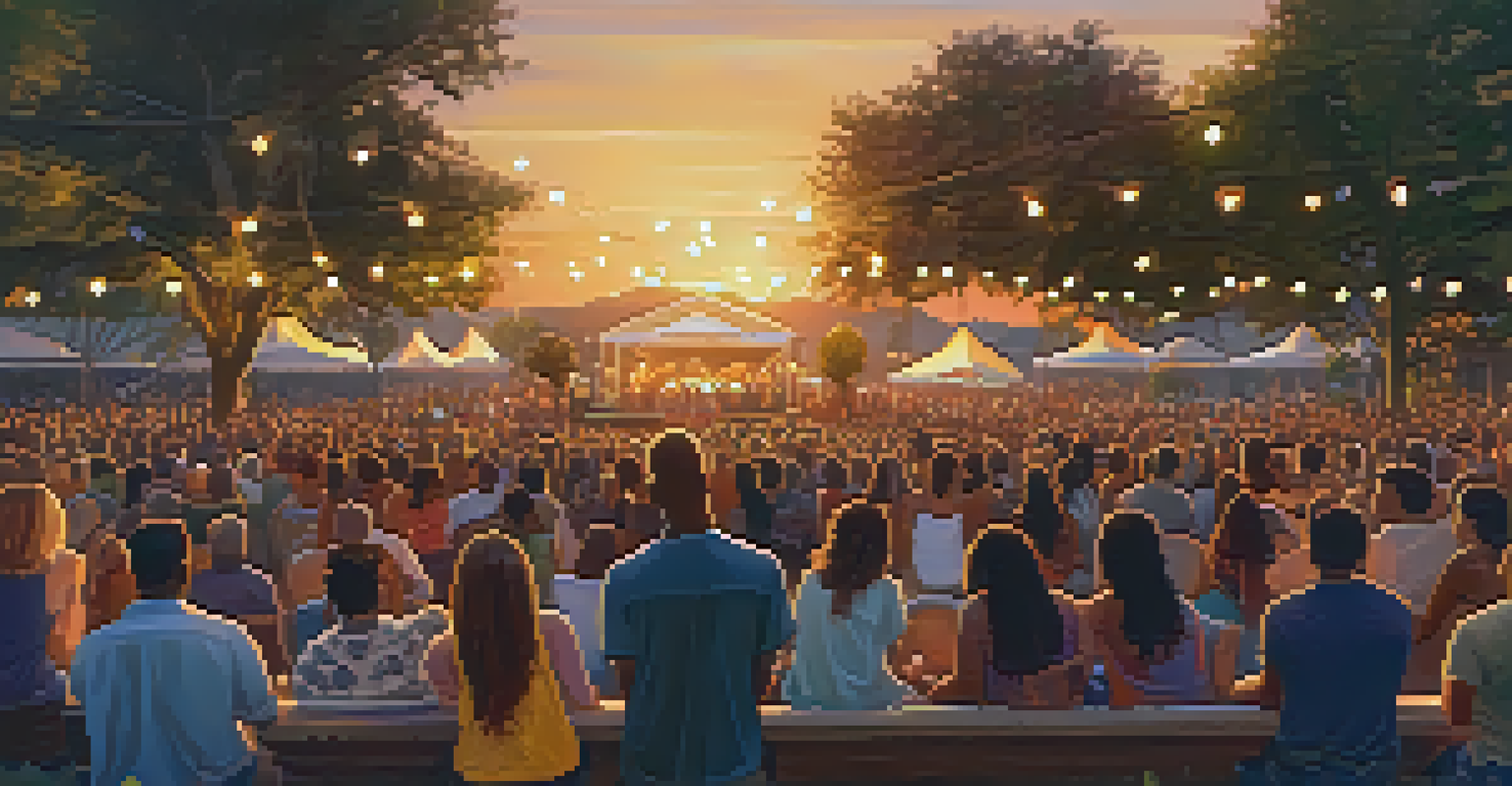The Synergy of Sound: Entheogens in Musical Experiences

What Are Entheogens and Their Role in Music?
Entheogens are substances that can alter consciousness, often used in spiritual or ceremonial contexts. They can evoke profound emotional responses, making them intriguing companions to music. By expanding perception, these substances help individuals connect deeply with sound, rhythm, and harmony.
Music is the shorthand of emotion.
Throughout history, many cultures have integrated entheogens into their musical traditions. For example, indigenous groups in the Amazon use ayahuasca during rituals, accompanied by traditional songs. This practice underscores the belief that music and entheogens can create a shared spiritual experience.
In contemporary settings, musicians and festival-goers often explore entheogens to enhance their auditory experiences. The synergy of sound and these substances can lead to heightened creativity, as artists tap into deeper layers of inspiration that may otherwise remain hidden.
The Science Behind Sound and Psychedelics
Research suggests that entheogens can alter brainwave patterns and increase connectivity between different brain regions. This can lead to a more profound appreciation of music, as the mind becomes more receptive to sound frequencies and emotional nuances. Essentially, the brain is primed to experience music in a new light.

One interesting phenomenon is synesthesia, where the stimulation of one sensory pathway leads to automatic experiences in another. For some, this means 'seeing' sounds or 'tasting' music. Entheogens can amplify these experiences, allowing listeners to perceive music in a multi-sensory way.
Entheogens Enhance Musical Experiences
Entheogens can alter consciousness, allowing individuals to connect deeply with sound and rhythm, creating a profound emotional experience.
This enhanced perception can also foster a sense of unity and connection among listeners. When individuals share these experiences, whether at a concert or during a personal journey, the collective energy can create a powerful atmosphere, transforming a simple musical event into a transcendent experience.
Entheogens and the Creative Process in Music
For many musicians, entheogens serve as a catalyst for creativity. Artists often report breakthroughs in songwriting or composition while under their influence. This can be attributed to the way these substances relax inhibitions and open the mind to unconventional ideas.
Psychedelics are a tool for understanding consciousness, and music is a universal language that helps to express it.
Take, for example, the legendary musician Jimi Hendrix, who was known to experiment with psychedelics during his creative process. His innovative guitar work and unique sound were, in part, shaped by his explorations of altered states. This demonstrates how entheogens can push the boundaries of traditional music-making.
However, it's essential to approach this topic with caution. While entheogens can inspire creativity, they can also lead to unpredictable outcomes. Striking a balance between exploration and mindfulness is crucial for musicians seeking to harness this synergy effectively.
Cultural Perspectives on Music and Psychedelics
Different cultures have long recognized the connection between music and entheogens. For instance, in African tribal rituals, drumming and dance often accompany the use of local entheogens, creating a powerful communal experience. This highlights the role of music in facilitating spiritual and social bonding.
In contrast, modern Western society has often stigmatized the use of psychedelics, viewing them as recreational rather than spiritual tools. However, there is a growing movement advocating for their responsible use in therapeutic and artistic contexts. This shift may encourage a more profound appreciation for the synergy between sound and entheogens.
Cultural Views on Music and Psychedelics
Different cultures recognize the spiritual connection between music and entheogens, highlighting their role in healing and community bonding.
As we learn from various cultural practices, music serves not just as entertainment but as a medium for healing and connection. By understanding these traditions, we can cultivate a more inclusive perspective on how entheogens can enhance musical experiences.
The Role of Live Music in Enhancing Entheogenic Experiences
Live music has a unique ability to evoke emotions and create shared experiences. When combined with entheogens, the energy in a live setting can amplify feelings of euphoria and connection. This is why many individuals seek out concerts or festivals as a backdrop for their journeys.
Imagine standing in a crowd, the bass thrumming through your body as the lights pulse in time with the music. In this environment, entheogens can deepen the experience, transforming a concert into a transcendental event. This phenomenon is often described as a 'collective consciousness,' where individual experiences merge into a shared emotional wave.
However, it's crucial for both artists and attendees to prioritize safety and mindfulness. Creating a supportive atmosphere can enhance the experience while minimizing potential risks associated with combining entheogens and live music.
Navigating the Risks of Combining Music and Entheogens
While the synergy of sound and entheogens can be magical, it's important to recognize the potential risks. Each person's reaction to entheogens can vary widely, and combining them with music can sometimes lead to overwhelming sensations. Understanding one's limits is essential for a positive experience.
Moreover, the setting in which entheogens are used can significantly influence the experience. A chaotic or uncomfortable environment may lead to anxiety rather than euphoria. Creating a safe, supportive space is crucial for enjoying the synergy of sound and substances.
Risks of Combining Music and Entheogens
While the combination can be transformative, understanding personal limits and creating a safe environment are crucial for a positive experience.
Therefore, educating oneself about the specific entheogen, its effects, and the context in which it will be used can mitigate risks. With the right approach, the combination of music and entheogens can be a beautiful exploration of consciousness.
Future Trends: The Intersection of Sound and Psychedelic Therapy
As research on psychedelics continues to grow, so does the interest in their therapeutic potential, especially in conjunction with music. Emerging studies suggest that music can enhance the therapeutic effects of entheogens, making the combination a promising avenue for mental health treatment.
Therapists are beginning to incorporate curated music playlists into psychedelic therapy sessions. The right music can help guide patients through their experiences, providing comfort and facilitating emotional processing. This innovative approach highlights the profound impact of sound on our emotional and psychological states.

Looking ahead, we may see a more extensive integration of music and entheogen-assisted therapy. This could lead to new forms of healing and creativity, ultimately reshaping how we understand the connections between sound, consciousness, and well-being.